Survey shows nearly half of employers do not have a well-being strategy today
Findings from a Willis Towers Watson survey identify employers’ plans and considerations around improving employee well-being for 2022 and 2023.

It will likely surprise few to learn that 86% of employers indicate mental health, stress and burnout are a top priority according to Willis Towers Watson (WTW) 2021 Wellbeing Diagnostic Survey. Awareness around all these topics has been on the rise, however action is slower to come. The survey, which received responses from 322 U.S. employers who employ 5.3 million workers, reports that 49% of employers indicate they have not yet formally articulated a well-being strategy; only a quarter of respondents said they have articulated and adopted one. Seventy-three percent of employer respondents suggest that within three years they plan to differentiate and customize their well-being program from other organizations to meet employee needs.
“The organizations that most effectively move the needle are those that develop a comprehensive strategy that supports all aspects of their employees’ wellbeing,” says Regina Ihrke, senior director, Health and Benefits, WTF. “It’s also important to articulate that strategy to employees, conduct manager training and measure effectiveness.”
The WTW 2021 Wellbeing Diagnostic Survey found that other critical well-being offerings, in addition to mental health, stress and burnout, are core benefits that include health and retirement (96%), life and disability benefits (82%) and leave benefits (80%). Looking to the future, the survey asked employer respondents to identify the top two actions they plan to take in 2022 or are considering for 2023 to improve employee’s emotional, physical, financial and social well-being.
1. Top actions for emotional well-being.
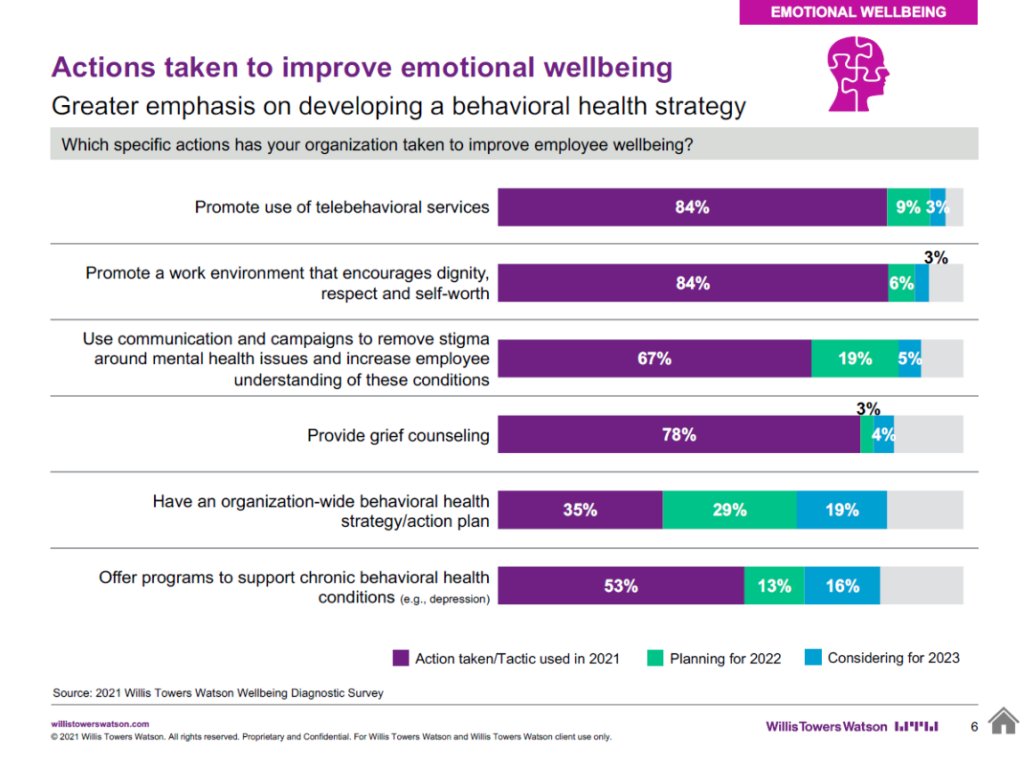
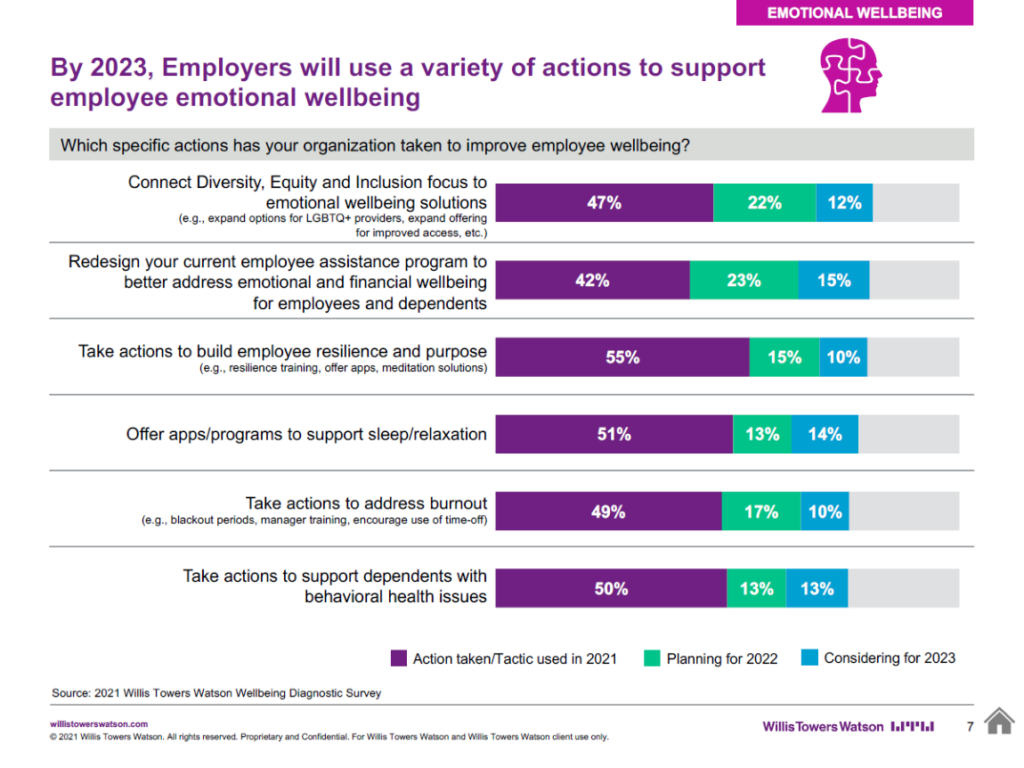
While in 2021, the focus was on the promotion of telebehavioral services and a supportive work environment, employer respondents to the survey indicate an organization-wide behavioral health strategy and action plan is a key priority for 2022 and beyond. As far as specific actions, redesigning an employee assistance program to better address emotional and financial well-being (23%) and connecting DE&I focus to emotional well-being solutions (22%) top the list for organizations’ plans for 2022.
2. Top actions for physical well-being.
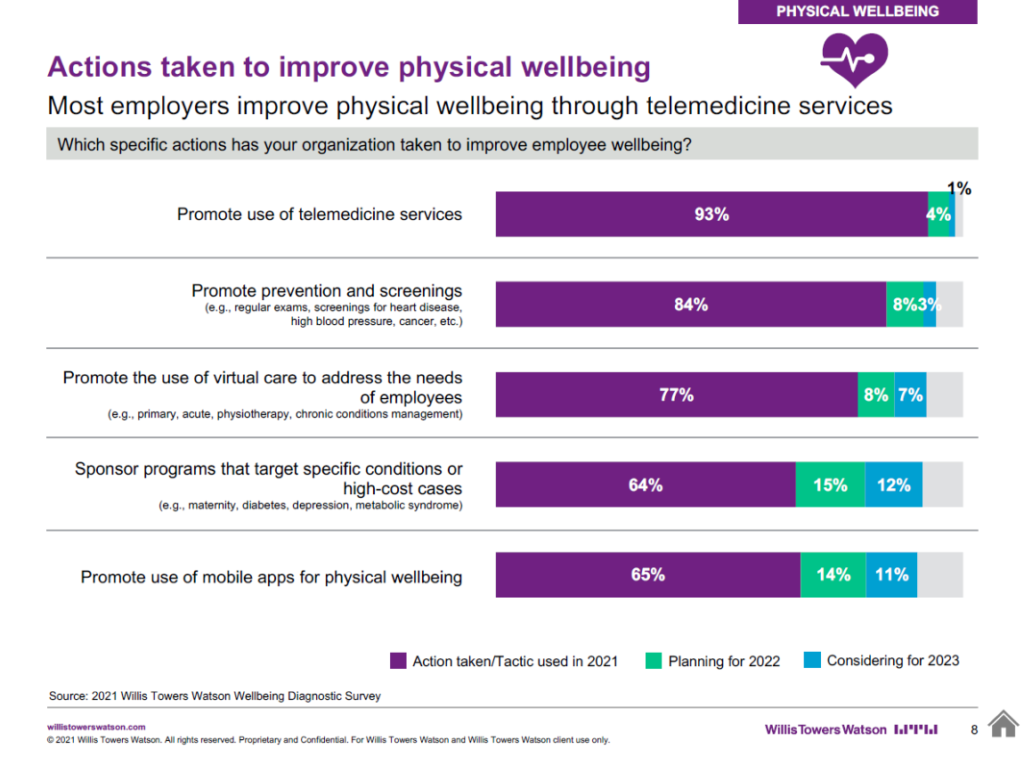
In 2021, the promotion of telemedicine services was a key action taken by 93% of employer respondents to the WTW survey. Ranking highest for 2022 planning and 2023 consideration around physical well-being actions are sponsoring programs to target specific conditions or high-cost cases (27%) and the promotion of mobile apps (25%).
3. Top actions for financial well-being.
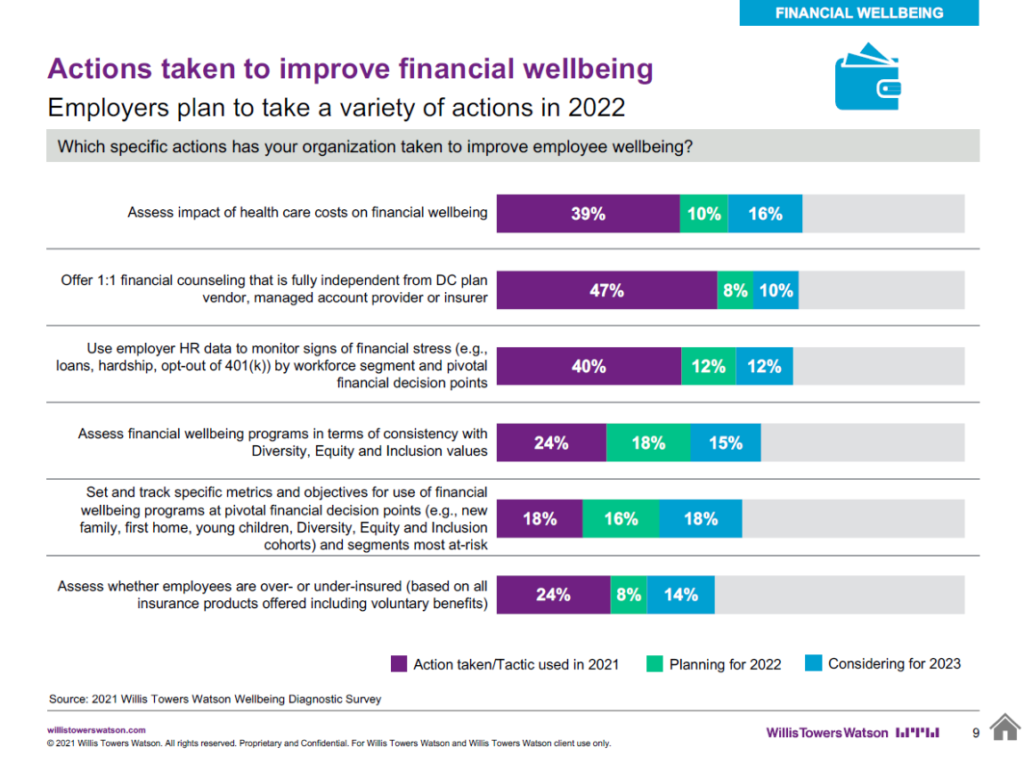
Where employers focused and are heading around financial well-being has a fairly even spread of both actions and plans. Though it received the highest percentage in 2021, less than half of respondents (47%) offer one-on-one independent financial counseling, and that action received the least interest for 2022 and 2023. The top two areas of interest for the future are assessing financial well-being programs to be consistent with DE&I values (33%) and setting and tracking specific metrics and objectives around the use of financial well-being programs at pivotal financial decision points (34%).
4. Top actions for social well-being.
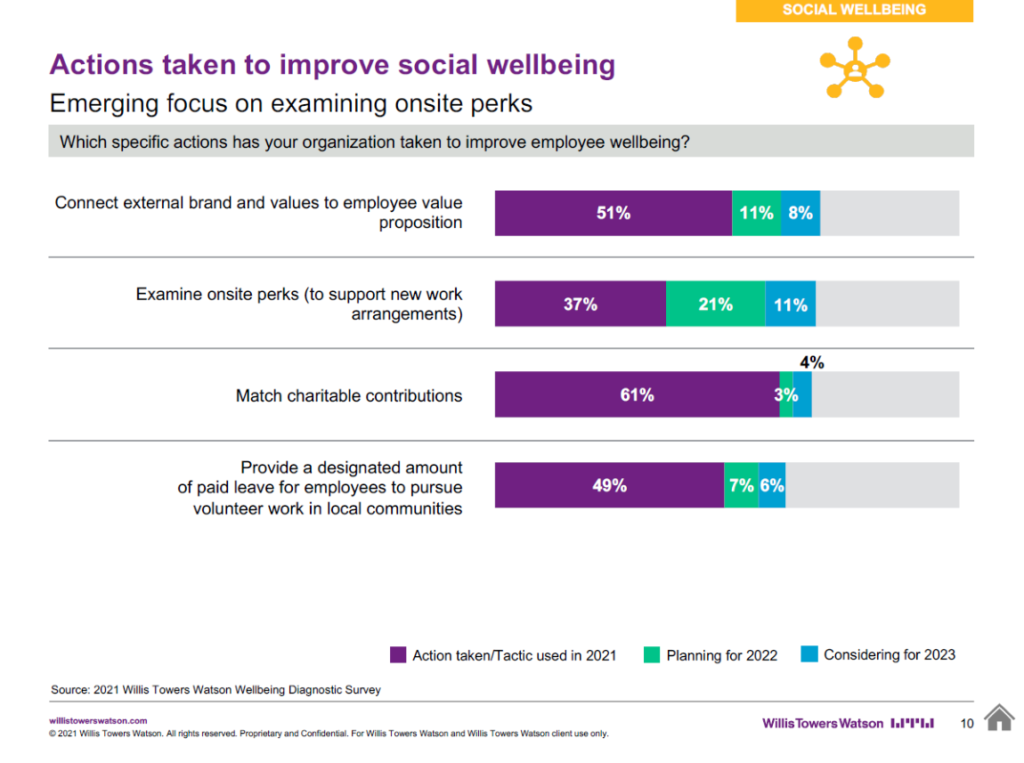
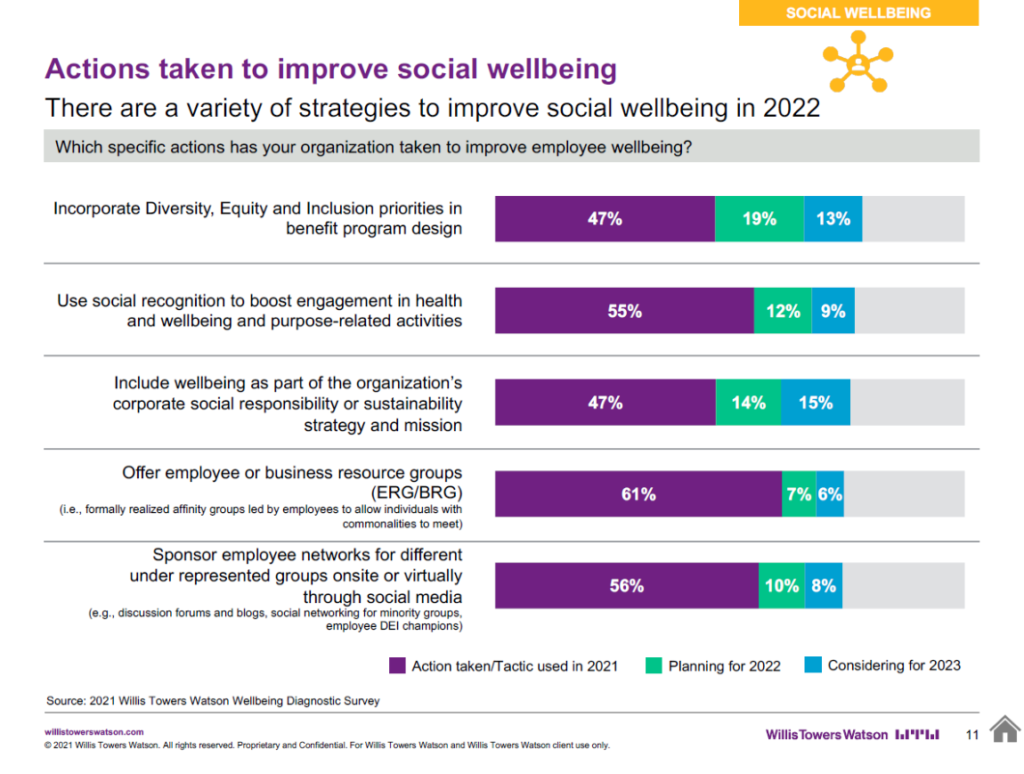
Matching charitable contributions and offering employee or business resource groups (both 61%) were the top tactics used by employer respondents around social wellness in 2021. Looking ahead to plans for 2022, the examination of on-site perks that support new work arrangements (21%) and the incorporation of DE&I priorities into benefit program design (19%) rank highly. Survey respondent considerations for 2023 take on a more dispersed spread, though including well-being as part of the organization’s corporate social responsibility or sustainability strategy and mission ranks highest with 15%.
Dive further into creating wellness programs with our Inclusive Wellness Series covering mental health, financial and physical wellness.
COMMENT
Ragan.com Daily Headlines
RECOMMENDED READING
Tags: emotional wellness, financial well-being, physical wellness, planning, social well-being, well-being, Willis Towers Watson

